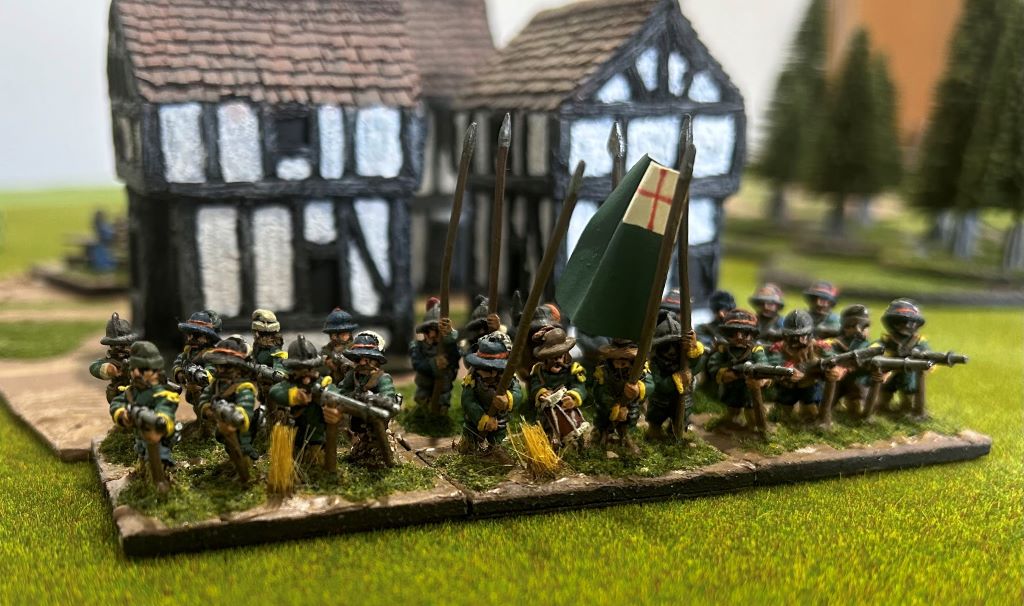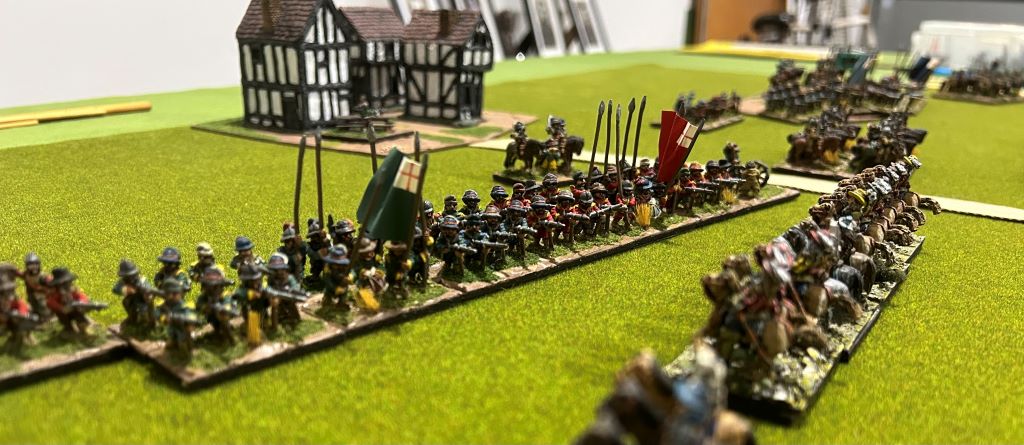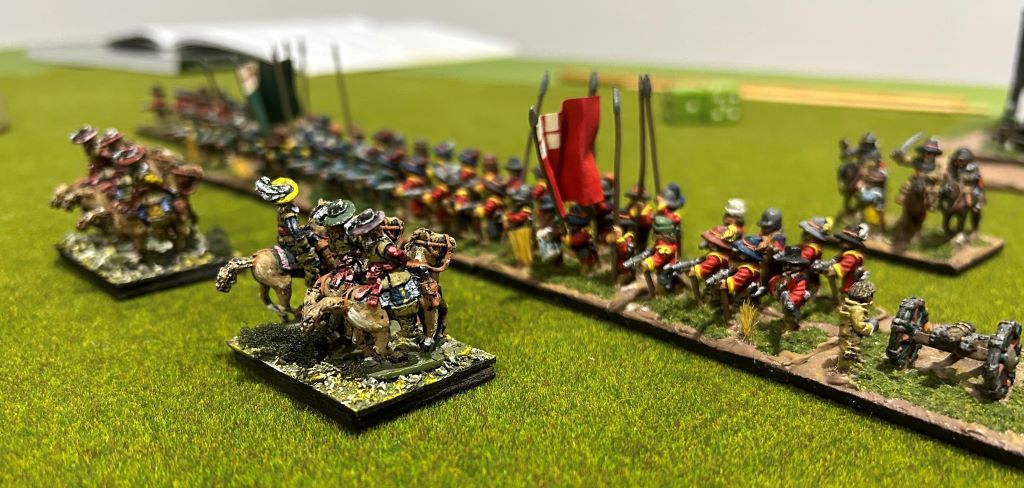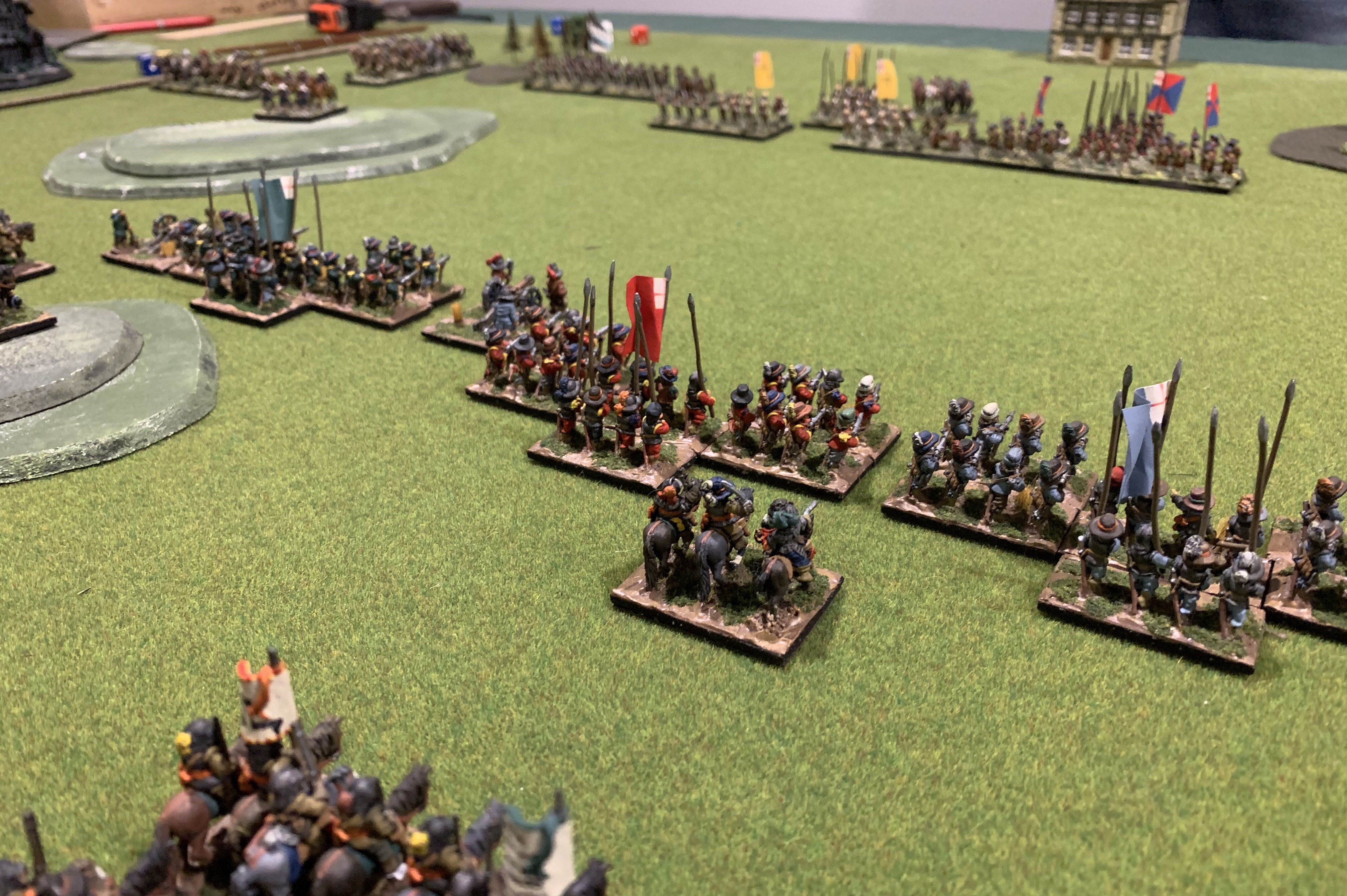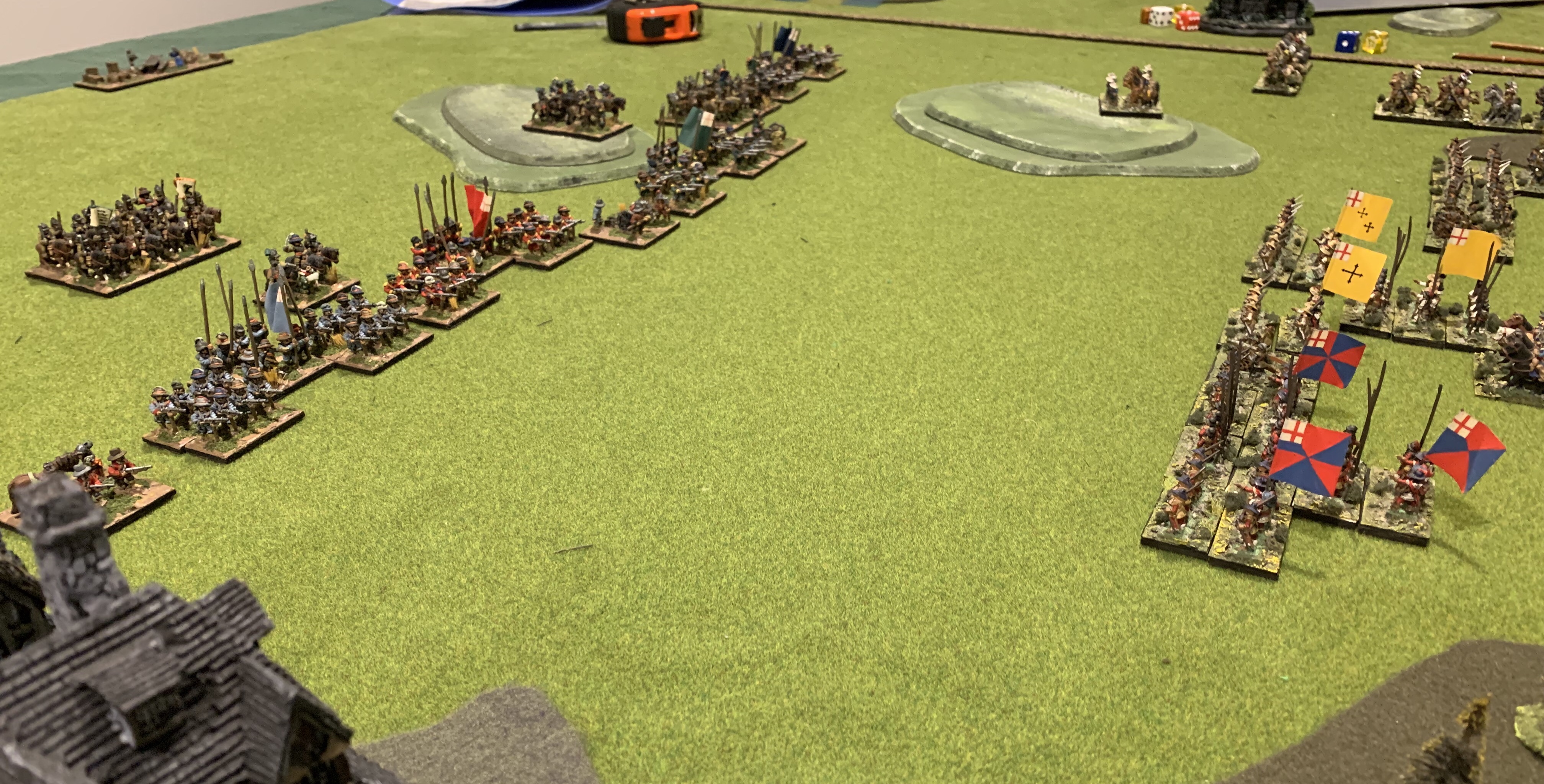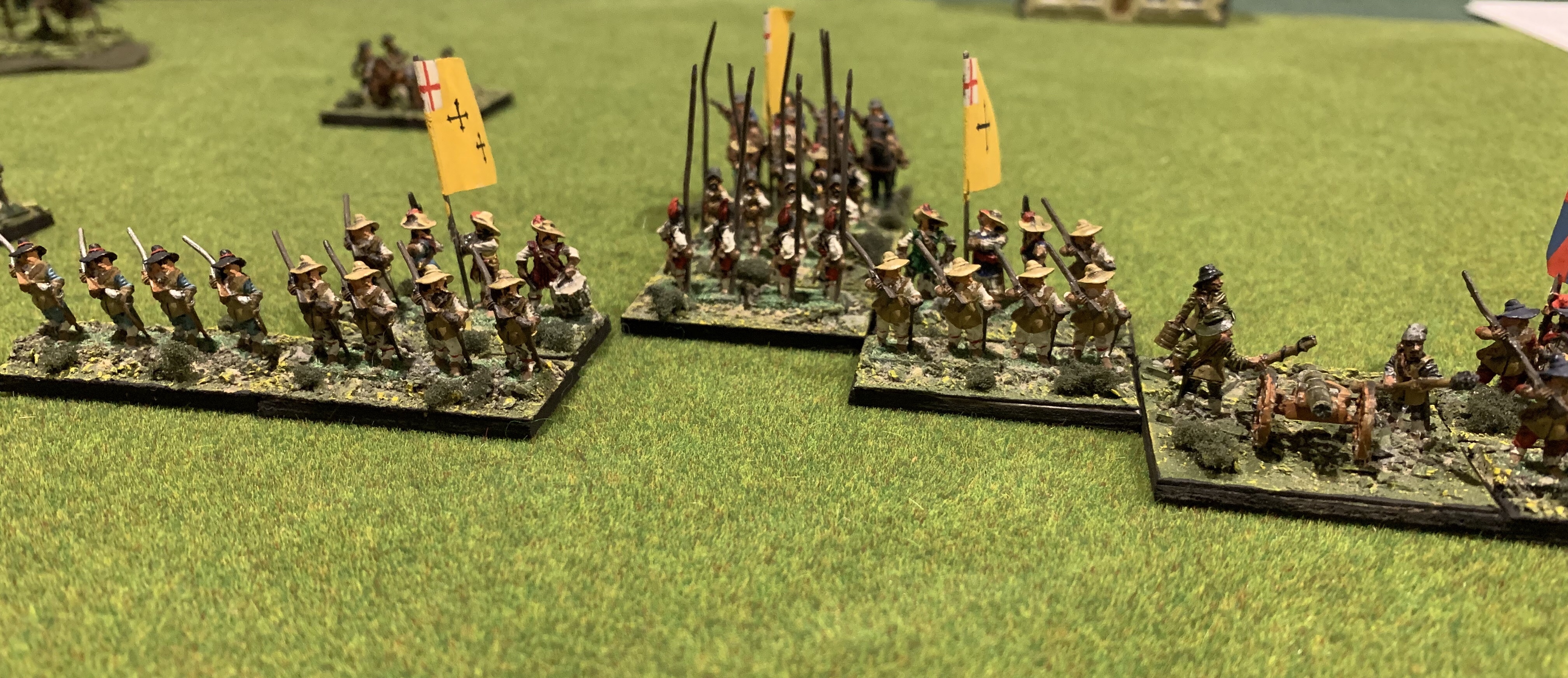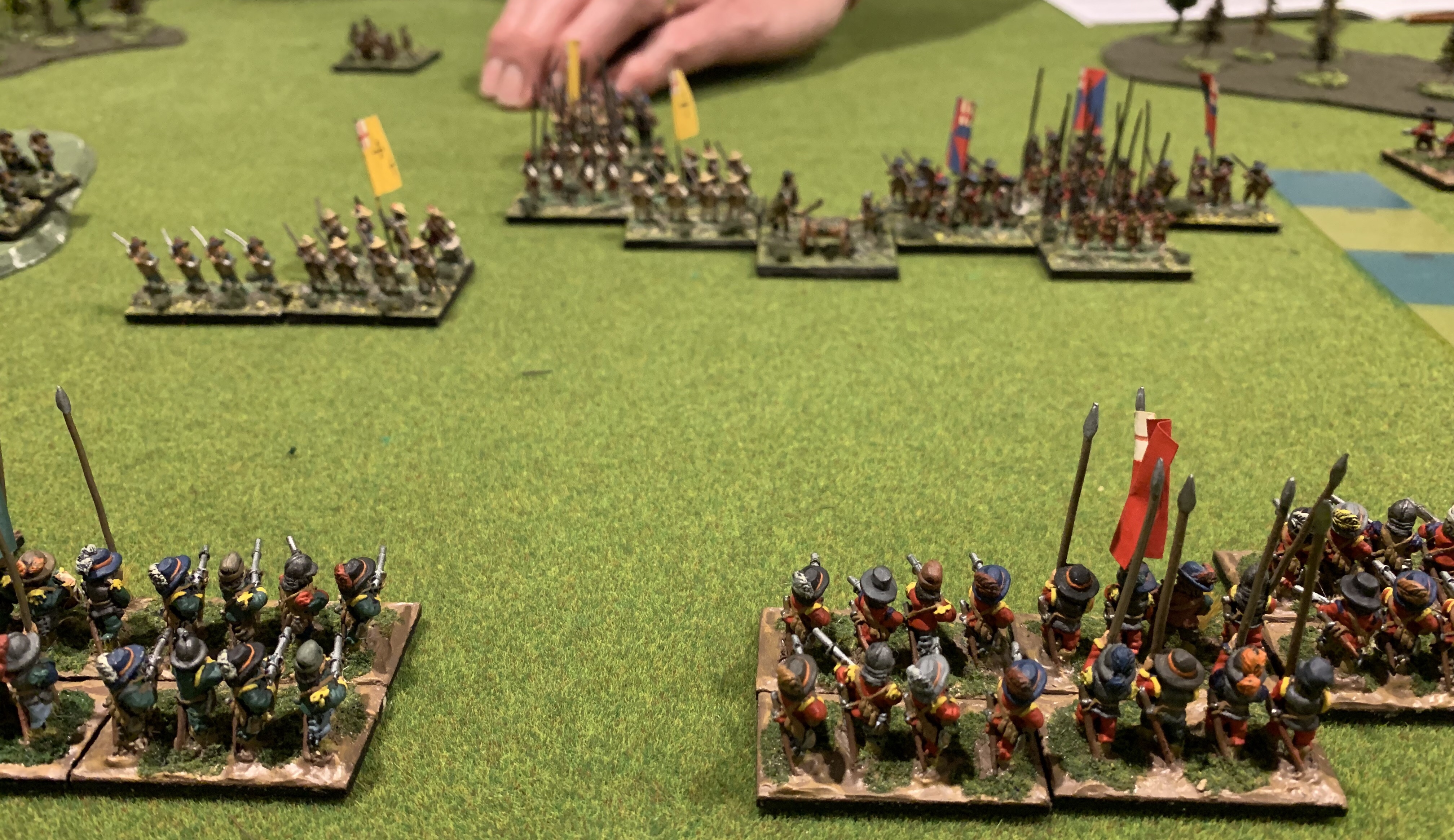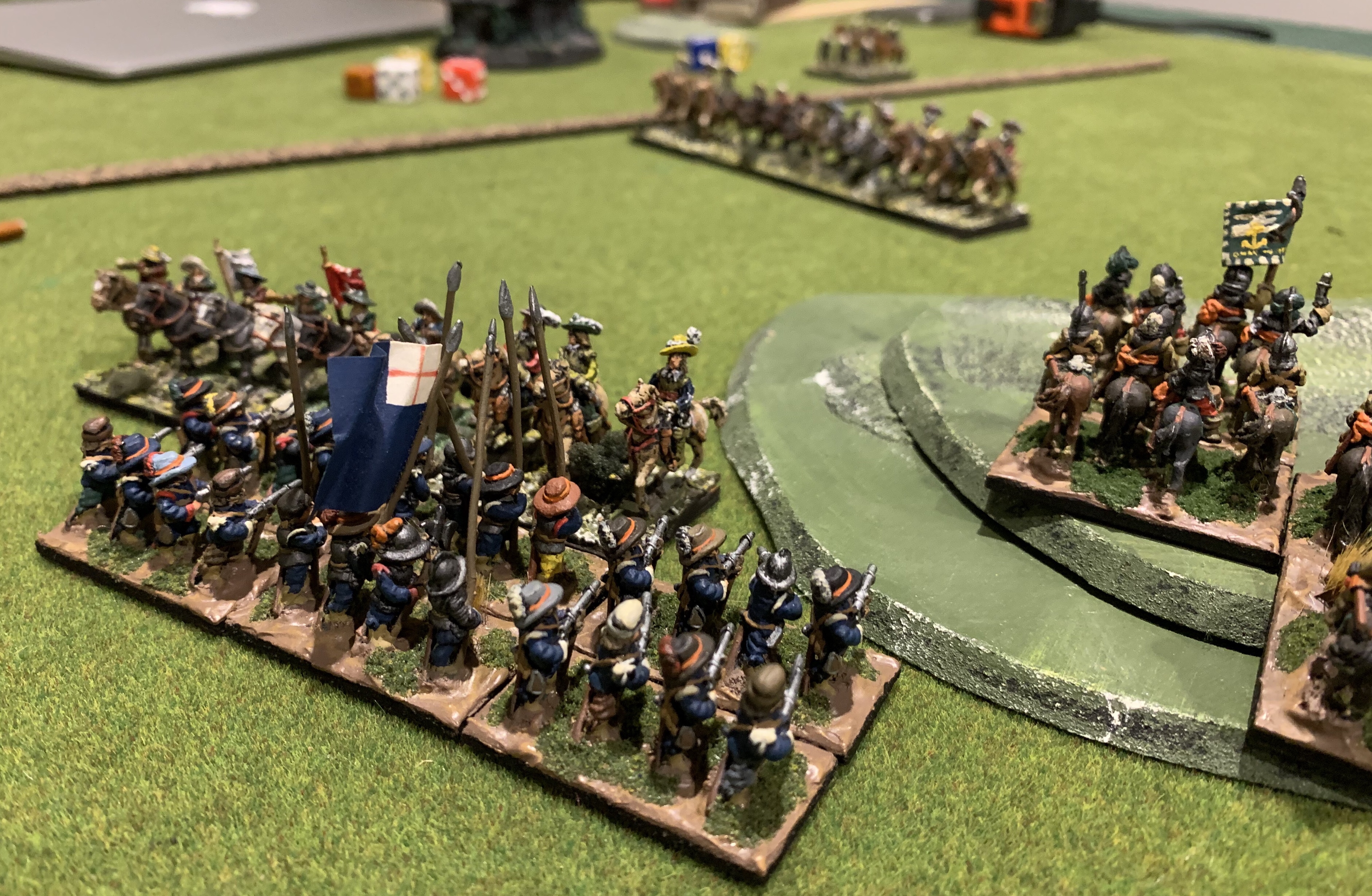The war in Borcetshire was in early 1644 still raging with neither Royalists or Roundheads having gained significant advantage. In an attempt to regain the initiative another raid was conducted by Royalist forces in April 1644. Lord Sutton who was intent on securing the small town of Fawcett Magna, or at least disrupting trade in the area. Alerted to the Royalist field army being on the move Parliamentarian forces under Sir John Palgrave marched south. On the 12th of April, late in the afternoon, the two armies met on the field just north of the town.
By noon Sir John had deployed his forces to block the advancing enemy. His army comprised some 2,400 foote, 900 horse and a handful of light gunnes along with a company of dragoons. Moving rapidly to counter the Royalist raid Sir John had moved south without baggage.
Below, Edward Meredith’s Regiment of Foote during the morning of the 12th. Raised in 1642 for Parliamentarian service, the regiment was originally drawn from the local Borcetshire Trained Bands. By 1644 it was a veteran regiment, with an establishment of some 600 men.

Opposite the Parliamentarians the Royalists deployed. They fielded a similar sized army though with fewer foote and a greater number of horse. Unlike the Parliamentarians they were slowed by a not insignificant baggage train.
The battlefield was bordered on one flank by a series of enclosures. On the Royalist right a small wood constrained the deployment fo some 200 horse. Sir John meanwhile was frustrated by gentle rise in his left rear. He failed to consider its implication when deploying his army. As a result orders sent to Sir Robert Dales, who commanded the Roundhead left, were delayed.
Below, a view of the Parliamentarian centre and left with the enclosures visible in the distance. The horse shown were under Sir John’s direct command and comprised horse willing to charge home retaining their pistols for the resulting melee.

As both armies advanced the Parliamentarians soon pressed the Royalist right and quickly gained an advantage. However, Royalist resolve stiffened and despite being demoralised the Royalists here conducted a series of counterattacks which in turn demoralised the Parliamentarian left.

Above, Royalist horse on the extreme Royalist right. Unable to deploy initially they would need to advance in column before deploying for battle. They were a target for Sir Robert’s horse and dragoons.
Below, a view of the Roundhead left early in the engagement. Parliamentarian forces here, it will be recalled, were commanded by Sir Robert Dales. He was however on the extreme left, just visible in the distance. The Parliamentarian horse in the foreground are harquebusiers. During the battle they would fire their carbines only to be charged by numerically inferior Royalist horse and break. This resulted in a gaping hole in the Roundhead line.

Elsewhere the battle was pursued with less dramatic results. Both Royalist and Roundhead regiments became fragmented in a series of prolonged musket exchanges and were unable to press the small advantages that occurred.
As dusk drew our battle to a conclusion Sir John was forced to face realities. He had suffered significantly greater losses than the Royalists. Reluctantly he ordered his forces to retire. Lord Sutton’s Royalists had gained a minor, if inconclusive, victory.
Our game used the DBR rules and both armies comprised some 300 points. The miniatures are all 15mm with the Parliamentarians from my collection and the Royalists from my opponent’s. The table was relatively small, measuring just 4′ x 3′, but which I find ideal for a smaller games. Despite the battles size it was a great little action. Hopefully we will schedule another game soon.
